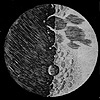|
за 2004 год.
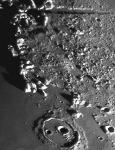 Cassini North
Cassini North
14.06.2004 | Лунное фото дня
Cassini is an unusual looking crater. I think its because it is surrounded by Imbrium lavas so there is an abrupt boundary with its near rim deposits, and because it is filled with lava nearly to its rim. Cassini is a more extreme version of Archimedes.
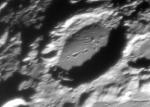 Mercy, Mersenius!
Mercy, Mersenius!
13.06.2004 | Лунное фото дня
Mersenius is in the second rank of lunar craters. Not a must-see like Copernicus, Plato or Gassendi, but a good crater with more interesting features than are obvious. Mersenius is 84 km wide and about 2.3 km deep.
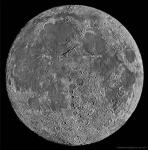 Magnificent Moon!
Magnificent Moon!
12.06.2004 | Лунное фото дня
Its impossible to take a single image of the Moon that shows topography across the entire Earth-facing side. Pablo Lonnie Pacheco of Monterrey, Mexico has responded to this impossibility with the most spectacular piece of image processing I have ever seen.
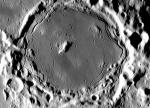 Awesome Pitatus
Awesome Pitatus
11.06.2004 | Лунное фото дня
Pitatus is one of the under-appreciated gems of the Moon. With a diameter of 97 km it is about the same width as Plato (101 km), but has a much more interesting interior. Presumably Pitatus was a Copernicus style crater when formed, with magnificent concentric wall terraces and a large central peak.
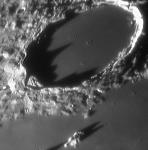 Peaks of Plato
Peaks of Plato
10.06.2004 | Лунное фото дня
The Moon always repays observation. For sociological reasons (sleep and jobs), Plato is commonly studied before midnight, and so the sunrise view with shadows cast by peaks on the eastern ramparts is most familiar.
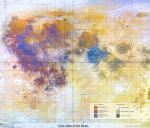 Color Moon Map
Color Moon Map
9.06.2004 | Лунное фото дня
The Jan 28 LPOD astonished many observers with its detailed color rendition of the Full Moon. Now that imager, Filipe Alves, has used advanced computer manipulation to create a Mercator-like projection color image of the Moon - the first I know of. This is a level of sophistication that is new to amateur Moon mapping.
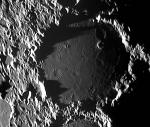 Ptolemaic Sunset
Ptolemaic Sunset
8.06.2004 | Лунное фото дня
Ptolemy, the Greek astronomer, dominated medieval science, and his crater dominates the central region of the Earth-facing hemisphere of the Moon. Ptolemaeus, the Latinized version of the Greek name, is 153 km wide and 2.6 km deep. The rim is battered and a piece is missing on the west side.
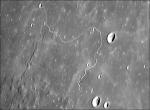 Marvelous Marius Rille
Marvelous Marius Rille
7.06.2004 | Лунное фото дня
Sinuous rilles have led some lunar scientists astray. The curving outlines led to proposals that such rilles were meandering water streams, although by shape alone a giant worm might have been equally defensible! But the Moon's lack of water and life eliminate those origins.
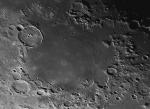 Sea of Dryness
Sea of Dryness
6.06.2004 | Лунное фото дня
The classical names for the lunar dark areas were all nautical, but all were dreadful misnomers since the Moon has always lacked seas and oceans. So today, we will examine the Sea of Dryness rather than Mare Humorum, the Sea of Moisture.
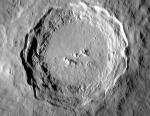 Copernicus
Copernicus
5.06.2004 | Лунное фото дня
Copernicus is the most important crater on the Moon. How can I call out any one as "most important," you ask? Let me modify the first sentence and you will probably agree: Copernicus is the most important crater on the Moon because of what it has taught us. Here are three lessons.
